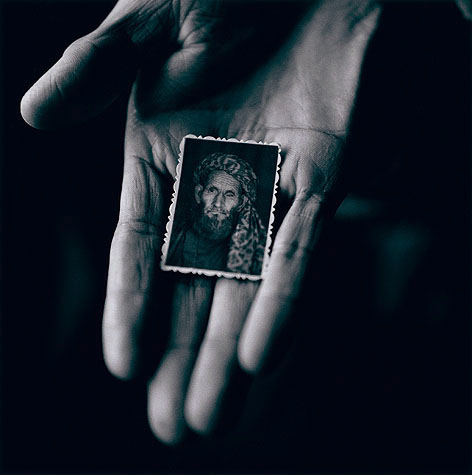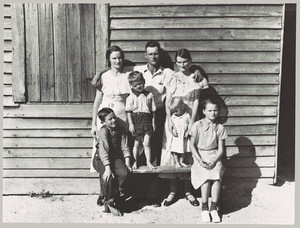This is an archive of the ArtCat Zine, 2007-2009. Please visit our new project, IDIOM.
Archive Fever at the ICP
Archive Fever - Uses of the Document in Contemporary Art
8 January 2008 - 4 May 2008
International Center for Photography Museum - 1133 Avenue of the Americas New York, NY
Archives are a ubiquitous institution, but the significance of an archive threatened by war is an entirely different animal — in its new and tenuous position, it changes drastically in terms of size and form. Archive Fever – Uses of the Document in Contemporary Art, at the International Center of Photography, explores and exposes as many aspects, structures, and uses of archiving as can be explored and exposed, and at the same time seems to have reserved, wisely, a little extra space for photographs, videos, and projects born of/predicated on human strife. It is an incredibly unfrivolous show.
Although an exhibit that particularly wants to translate historical events from the 1960s to the present is bound to become caught up in the sadder episodes of those years, the curator, Okwui Enwezor, folds them into Archive Fever so that, more than anything else, they make sense. Where a series of photographs of terrorists’ relatives’ hands could have awkwardly glared at its viewers, the pictures’ purpose is well-exercised within the form of the show. Looking around, and equally importantly, reading the accompanying text to each exhibit, bestows a very present feeling that this show has been quite actively assembled.
What Enwezor has created is a web of references to and reenactments of revolutions, civil wars, segregation and deprivation. These solemn pieces are spread among works like Christian Boltanski’s stacked, dimly lit boxes labeled with black and white photos (evoking a conventional view of an archive) and Glenn Ligon’s room full of Robert Mapplethorpe’s black and white pictures of nude black men (re-archiving another archive, and bringing to light myriad questions regarding the validity and nature of the photographs themselves.) Ligon’s piece is spangled with commentary from myriad sources, and through this conceit becomes archetypical of the show – it depicts archiving for the sake of archiving. More importantly, however, from its heightened awareness of what it means for an archive to fill the roll it does, Notes on the Margin of the Black Book, like Archive Fever as a whole, appears intelligently in earnest about the significance of its own subject matter.
Works aiming to re-create and preserve the faces of lives changed by the turbulent state are the most likely, here, to embrace their subjects. The inclusion of these works reveals where the compassion lies in this show – Enwezor is appropriately partial to victims. Placed near each other are large black and white photographs, by Craigie Horsfield and Fazal Sheikh, depicting citizens of Soviet-ruled Krakow and hands holding tiny pictures of Muslim men, respectively. In the first, Magda Mierwa and Leszek Mierwa (1984), the young couple stares at the camera. They’re good-looking, but there is nothing happy about them, and yet this picture of these two off-duty factory workers is among the most purely aesthetically beautiful pieces at the show. The photograph seems to ache, like an overreaching Gap ad, or merely like the portrait that it is – a young man and woman who could have and be much more in other circumstances are sentenced, here, to an era of deprivation and decline. Despite its beauty, a sense of condemnation is most prevalent in this photograph; the Mierwas look like they know what is in store for them and their country. Condemnation in Afghan Images is hidden under others layers – senses of loss and of glory. These tiny archives are the only thing left of the men, besides the family members’ hands that hold the pictures. Each accompanying testament to the subjects (possible terrorists) in these passport pictures indicates their commemoration. This tribute to memory, encapsulated here in lovely photographs, however, is wrapped up with Sheikh’s necessary disregard for judgments passed by the world outside the men’s immediate families.

Similarly, pieces seemingly unrelated to the depths of the darker sides of the human condition possess a social conscience. Unlike the previous two instances, however, the subject matter is a vehicle for expressing this conscience rather than a subject of its pity. The re-creation of Walker Evans’s Depression-era photographs doesn’t take a breath to revel in their beauty; rather, in questioning the renowned photographer’s right to his subjects, the artist reminds you that these sad but bucolic scenes were entirely real. The point made by the artist, Sherrie Levine, is that in shooting them Evans did not create, own, or even necessarily have much of a right to this era. Archive Fever’s skeptical thread is also picked up in a The Specialist: Eichmann in Jerusalem, Eyal Sivan’s film, culled from footage of the Nazi’s trial in Israel. Deconstructed, reconstructed, and unemotional, the film shows us a montage of witnesses swearing to tell the truth, but very nearly obfuscates exactly that in its denial of "archival linearity." Putting the manipulation of an archive at the forefront, right alongside its own contents, is one of the greatest points Enwezor makes.
ZINE
HOME
TIPS / COMMENTS
CATEGORIES
CONTRIBUTORS
- Greg Afinogenov
- B. Blagojevic
- Adda Birnir
- Susannah Edelbaum
- Julie Fishkin
- Paddy Johnson
- Jessica Loudis
- Christopher Reiger
- Andrew Robinson
- Peter J. Russo
- Blythe Sheldon
- S.C.Squibb
- Hrag Vartanian

